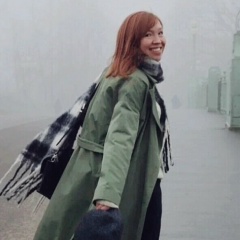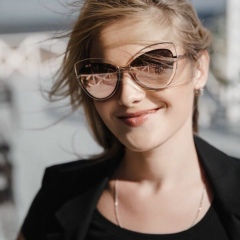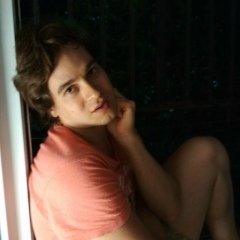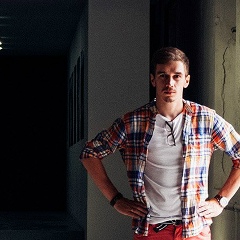Вот и сам городок. Бургхаузен. На правом берегу. А на левом берегу - Австрия, откуда и была сделана фотка. Река - Зальцах, та самая, которая протекает через центр Зальцбурга.
С замком Бургхаузена вышел коллапс топонимики.
Город назвали в честь замка (крепости, точнее), бург - крепость. А замки в Германии обычно называются в честь городов, где они находятся. Получается, он должен бы был называться Бург Бургхаузен, но поскольку как-то некрасиво выходит, все его называют просто Бург.
Замок считается самым длинным в Европе, и это похоже на правду, весь периметр внутри стены замучаешься обходить.
Интересный способ выделиться. Обычно с замками выделялись в высоту или в красоту. А этот весь ушел в длину, в высоту уже и не надо.
Интересно, что австрийский холмик напротив повыше замка, но там никто ничего исторического не строил. Зато теперь есть отличная обзорная площадка. Всегда уважаю австрийцев за умение обустроить любое местечко так, что там приятно.
Вроде суровый склон холма, а сделали дорожку, с деревянными перилами, разметили значком флага как на нее пройти.
И набережная у них шикарно сделана.
Хотя там деревушка на десять домов, один отель и один ресторан.
На мосту с баварской стороны встречает маленькая скульптура льва. С австрийской - просто флаги австрийские.
Сама крепость хорошо обустроена, там раздолье детям. Взрослым не так интересно. Да и в 5 вечера территория, где замок, начинает закрываться. Крепость остается открытой. Там внутри полно домов, где люди живут. С учетом внутренней площади - неудивительно. Думаю, там полгорода живет внутри стен.
Городок маленький, конечно, и известен в основном местным. Пообедать есть три заведения, два из которых закрываются в пол-третьего дня.
Но побродить там здорово, природа вокруг чудесная. По другую сторону озеро зеленого цвета, например.
В целом - советую. От Мюнхена - 2 часа в одну сторону на поезде, с 1 пересадкой. Поезда ходят каждый час.
Для поездки можно использовать Юго-восточно-баварский билет, который стоит 20 евро на анлим поездки в сутки (но с обязательным условием проезда через Мюльдорф в каждой поездке).
Поезда дизельные, из Мюнхена ходят новые двухэтажники, дальше - довольно старенькие, но в отличном состоянии.
До замка от вокзала где-то полтора километра.
На вокзале все плохо с вендингом, запасайтесь водой заранее. Соседняя с вокзалом кафешка берет 2.5 евро за один стакан воды.
С замком Бургхаузена вышел коллапс топонимики.
Город назвали в честь замка (крепости, точнее), бург - крепость. А замки в Германии обычно называются в честь городов, где они находятся. Получается, он должен бы был называться Бург Бургхаузен, но поскольку как-то некрасиво выходит, все его называют просто Бург.
Замок считается самым длинным в Европе, и это похоже на правду, весь периметр внутри стены замучаешься обходить.
Интересный способ выделиться. Обычно с замками выделялись в высоту или в красоту. А этот весь ушел в длину, в высоту уже и не надо.
Интересно, что австрийский холмик напротив повыше замка, но там никто ничего исторического не строил. Зато теперь есть отличная обзорная площадка. Всегда уважаю австрийцев за умение обустроить любое местечко так, что там приятно.
Вроде суровый склон холма, а сделали дорожку, с деревянными перилами, разметили значком флага как на нее пройти.
И набережная у них шикарно сделана.
Хотя там деревушка на десять домов, один отель и один ресторан.
На мосту с баварской стороны встречает маленькая скульптура льва. С австрийской - просто флаги австрийские.
Сама крепость хорошо обустроена, там раздолье детям. Взрослым не так интересно. Да и в 5 вечера территория, где замок, начинает закрываться. Крепость остается открытой. Там внутри полно домов, где люди живут. С учетом внутренней площади - неудивительно. Думаю, там полгорода живет внутри стен.
Городок маленький, конечно, и известен в основном местным. Пообедать есть три заведения, два из которых закрываются в пол-третьего дня.
Но побродить там здорово, природа вокруг чудесная. По другую сторону озеро зеленого цвета, например.
В целом - советую. От Мюнхена - 2 часа в одну сторону на поезде, с 1 пересадкой. Поезда ходят каждый час.
Для поездки можно использовать Юго-восточно-баварский билет, который стоит 20 евро на анлим поездки в сутки (но с обязательным условием проезда через Мюльдорф в каждой поездке).
Поезда дизельные, из Мюнхена ходят новые двухэтажники, дальше - довольно старенькие, но в отличном состоянии.
До замка от вокзала где-то полтора километра.
На вокзале все плохо с вендингом, запасайтесь водой заранее. Соседняя с вокзалом кафешка берет 2.5 евро за один стакан воды.
Here is the town itself. Burghhausen. On the right bank. And on the left bank - Austria, from where the photo was taken. River - Salzach, the one that flows through the center of Salzburg.
With the castle of Burghausen there was a collapse of toponymy.
The city was named after the castle (fortress, more precisely), burg - fortress. And castles in Germany are usually named after the cities where they are located. It turns out that it should have been called Burgh Burghausen, but since it is somehow ugly to go, everyone calls him simply Burgh.
The castle is considered to be the longest in Europe, and it seems to be true, the whole perimeter inside the wall is tortured to bypass.
An interesting way to stand out. Usually with locks stood out in height or in beauty. And this one is all gone in length, no longer necessary in height.
Interestingly, the Austrian mound is higher than the castle, but no one built anything historical there. But now there is a great observation platform. I always respect the Austrians for the ability to equip any place so that it is nice.
Like a harsh hillside, and made a path, with wooden railing, marked with a flag icon as it go.
And the embankment they have elegantly made.
Although there is a village for ten houses, one hotel and one restaurant.
On the bridge from the Bavarian side meets a small sculpture of a lion. From the Austrian - just Austrian flags.
The fortress itself is well equipped, there is a lot of children there. Adults are not so interesting. Yes, and at 5 pm the territory where the castle begins to close. The fortress remains open. Inside is full of houses where people live. Given the internal area is not surprising. I think there half the city lives inside the walls.
The town is small, of course, and is mainly known for its local. Dine there are three places, two of which are closed in the half-third day.
But it’s great to wander there, the nature around is wonderful. On the other side of the lake is green, for example.
In general - I advise. From Munich - 2 hours one way by train, with 1 transfer. Trains run every hour.
For a trip, you can use the Southeast Bavarian ticket, which costs 20 euros for anlim trip per day (but with the obligatory condition of traveling through Müldorf on each trip).
The trains are diesel, from Munich new dvuhetazhnye go, on - quite old, but in excellent condition.
To the castle from the station about half a kilometer.
At the station, everything is bad with vending, stock up on water in advance. The café next door to the station takes 2.5 euro for one glass of water.
With the castle of Burghausen there was a collapse of toponymy.
The city was named after the castle (fortress, more precisely), burg - fortress. And castles in Germany are usually named after the cities where they are located. It turns out that it should have been called Burgh Burghausen, but since it is somehow ugly to go, everyone calls him simply Burgh.
The castle is considered to be the longest in Europe, and it seems to be true, the whole perimeter inside the wall is tortured to bypass.
An interesting way to stand out. Usually with locks stood out in height or in beauty. And this one is all gone in length, no longer necessary in height.
Interestingly, the Austrian mound is higher than the castle, but no one built anything historical there. But now there is a great observation platform. I always respect the Austrians for the ability to equip any place so that it is nice.
Like a harsh hillside, and made a path, with wooden railing, marked with a flag icon as it go.
And the embankment they have elegantly made.
Although there is a village for ten houses, one hotel and one restaurant.
On the bridge from the Bavarian side meets a small sculpture of a lion. From the Austrian - just Austrian flags.
The fortress itself is well equipped, there is a lot of children there. Adults are not so interesting. Yes, and at 5 pm the territory where the castle begins to close. The fortress remains open. Inside is full of houses where people live. Given the internal area is not surprising. I think there half the city lives inside the walls.
The town is small, of course, and is mainly known for its local. Dine there are three places, two of which are closed in the half-third day.
But it’s great to wander there, the nature around is wonderful. On the other side of the lake is green, for example.
In general - I advise. From Munich - 2 hours one way by train, with 1 transfer. Trains run every hour.
For a trip, you can use the Southeast Bavarian ticket, which costs 20 euros for anlim trip per day (but with the obligatory condition of traveling through Müldorf on each trip).
The trains are diesel, from Munich new dvuhetazhnye go, on - quite old, but in excellent condition.
To the castle from the station about half a kilometer.
At the station, everything is bad with vending, stock up on water in advance. The café next door to the station takes 2.5 euro for one glass of water.

У записи 2 лайков,
0 репостов,
102 просмотров.
0 репостов,
102 просмотров.
Эту запись оставил(а) на своей стене Антон Лобов























